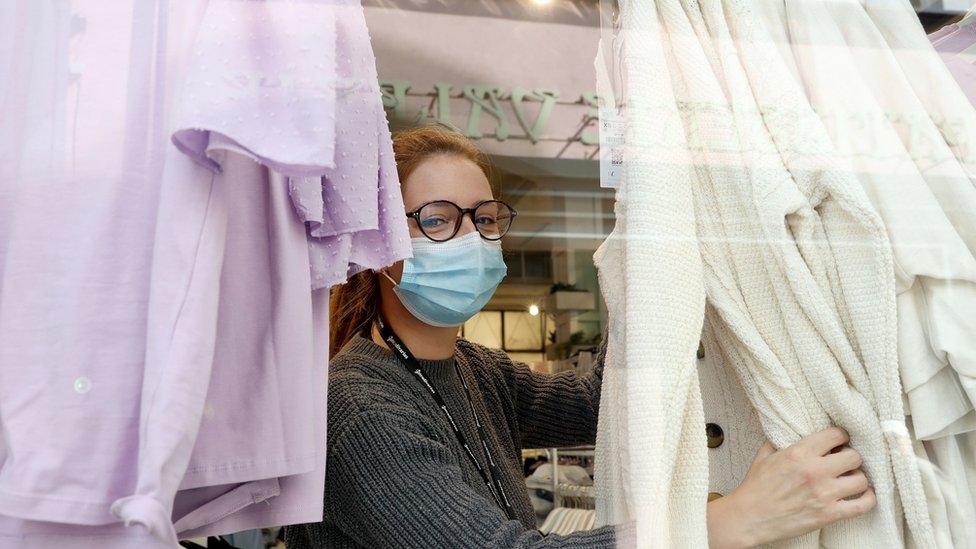Coronavirus Q&A: How would a circuit breaker work for NI?
- Published
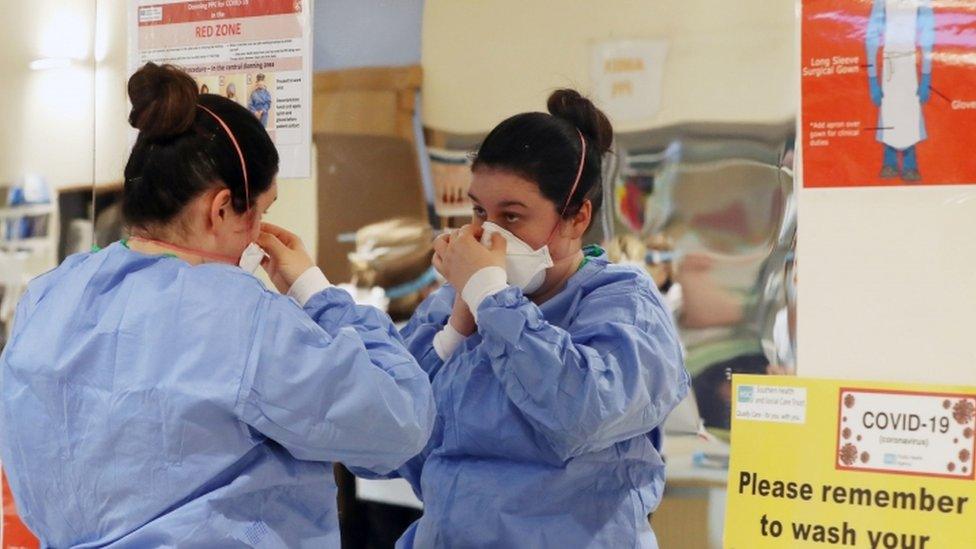
As Northern Ireland heads into winter, a so-called circuit breaker is being considered to slow the spread of Covid-19
As coronavirus cases continue to rise again in NI, the possibility of imposing a so-called "circuit breaker" has been gaining traction.
Stormont ministers have insisted it won't be a return to full lockdown like we experienced in March, so what would it look like?
BBC News NI explains why it is being considered, the impacts it could have and when it might take effect.
What is a circuit breaker?
It is a short, sharp period of tightened restrictions for everyone to curb the spread of coronavirus, usually lasting about two weeks.
It gained traction in London last month, with Number 10 proposing it as one way of trying to halt the rapid growth in infections.
Other countries such as New Zealand and Singapore have previously deployed the strategy.
Why is it an option being considered by Stormont?
The number of Covid-19 cases in Northern Ireland has jumped dramatically in recent weeks.
Although hospital admissions and numbers of patients in intensive care remain low, health officials remain concerned that the situation could spiral out of control into the winter season, unless more drastic measures are taken soon.
The Department of Health has said there could be 1,000 new coronavirus cases every day in Northern Ireland in a month's time, if the current trend continues.
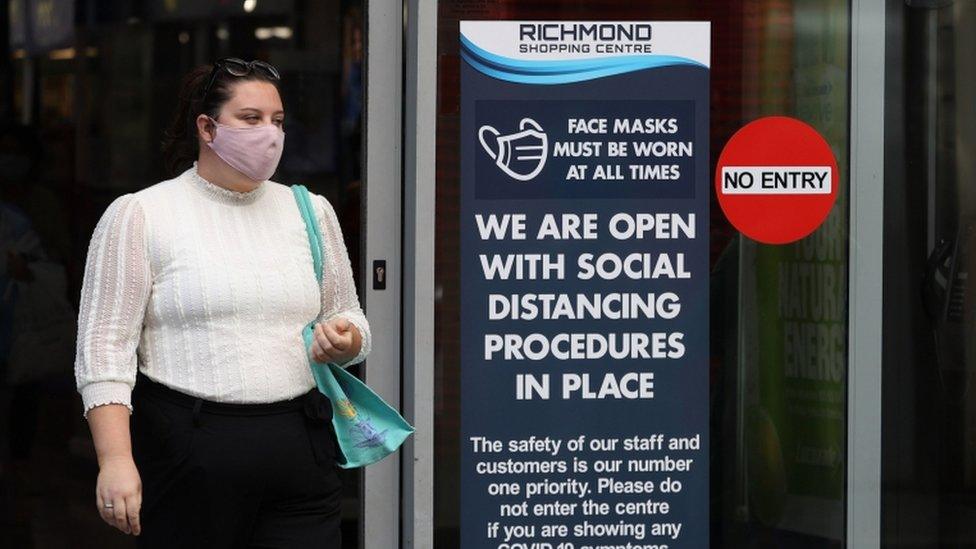
Covid-19 numbers in Northern Ireland have jumped dramatically in recent weeks
The rate of new deaths following a positive test for Covid-19 has also begun to rise and the R number - or rate of transmission of the virus - is currently estimated at about 1.5.
That's why the idea of a circuit breaker remains on the table, with NI's Chief Scientific Adviser Prof Ian Young saying it is "one of the more powerful interventions in terms of reducing the transmission of the virus".
How long would it last?
It needs to be long enough to break the chains of transmission - but short enough to minimise the effect on the economy.
Its length would be pre-determined and likely to last a maximum of two or three weeks.
Health Minister Robin Swann has said there would be a "timeliness" to introduce the measure around the half-term Halloween holidays, but warned that if cases continued rising sharply, it may need to be brought in sooner.
What about schools?
The executive has said that keeping schools open remains its top priority, with First Minister Arlene Foster saying there would not be a return to a situation where schools close again, like they did in March.

The executive has said that keeping schools open is a priority
If, as anticipated, the executive implements the move in the run-up to Halloween, there could be an extended break for schools, as opposed to the one-week half term they normally get at this time of year.
BBC News NI understands there are ongoing discussions within the Department of Education about the break lasting as long as three weeks.
If that was the case, schools could be asked to stay open for children of key workers, but most pupils would be taught remotely for two of those weeks.
What would it look like?
Practically, it could mean an end to going to the pub or to restaurants for the duration of the circuit breaker.
The hospitality industry in NI is already required to close at 23:00, but additional local restrictions currently apply in Derry City and Strabane council area, where pubs, hotel bars and restaurants can only offer takeaway, delivery, and outdoor dining.
Executive ministers have already said those measures may have to be extended across other parts of Northern Ireland soon.
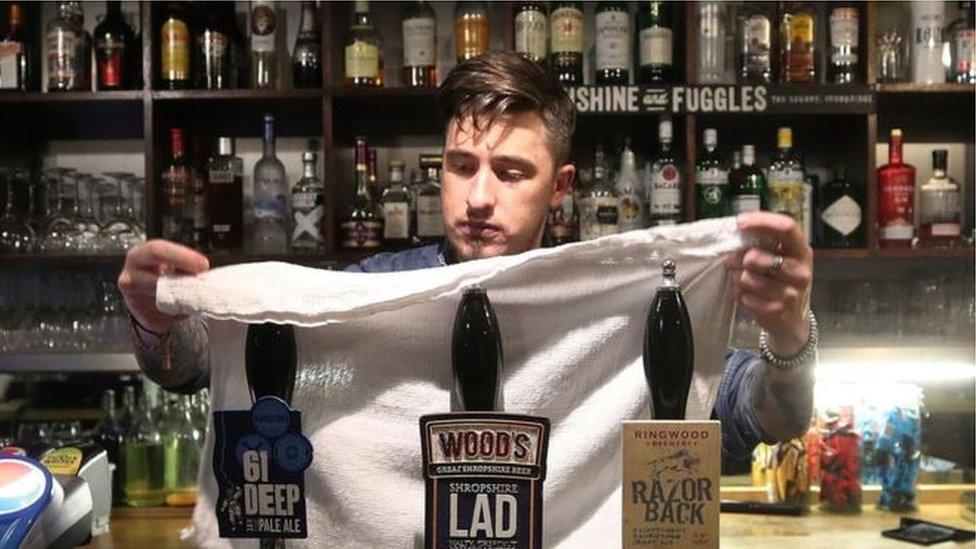
A circuit breaker could also mean stricter guidance on people working from home, and advice against travel out of your local area.
It is not clear if some close contact services - such as hair and beauty salons - would be advised to close, and whether the executive would issue further advice on weddings, funerals and church services.
The exact impact on jobs is also uncertain, given the furlough scheme is due to end on 31 October, which could coincide with a circuit breaker.
What concerns do ministers have about imposing it?
Economy Minister Diane Dodds has argued strongly that further measures to curb the spread of the virus will have a negative impact on businesses.
She has called for an economic analysis to be carried out on the measure before the executive agrees to introduce it.
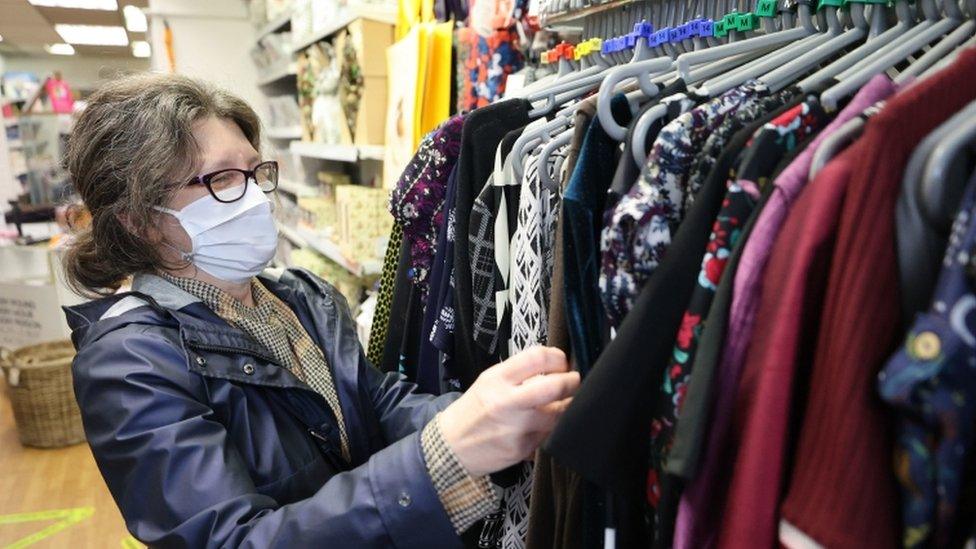
Economy Minister Diane Dodds has called for an analysis to be carried out before the executive agrees to further measures
Her officials have warned that Northern Ireland "cannot afford another lockdown", and that there could be more than 100,000 unemployment claimants in Northern Ireland by the end of this year.
Other executive ministers have also been pressing Westminster for commitments of additional money, in the event that tighter Covid restrictions are brought in.
Will other parts of the UK or Republic of Ireland adopt a similar plan?
In reality, the executive will have to balance its health plans to tackle the virus with its reliance on the British government for extra financial support.
On Friday, Chancellor Rishi Sunak said employees who work for UK firms forced to shut by law because of coronavirus restrictions will get two-thirds of their wages paid for by the government.
He said this was an "expansion" of the Job Support Scheme, which begins on 1 November and will be available for six months.
As a result, Northern Ireland and the other devolved nations will automatically get a rise in funding through what's known as a Barnett consequential.
Stormont ministers will be keeping a keen eye on Westminster for an anticipated restrictions update on Monday, which could see pubs and restaurants shut in the worst-affected areas.
The executive is also conscious of the land border shared with the Republic of Ireland, and there have been calls for an all-island approach to any further measures.
On Tuesday, the Irish government rejected advice from its public health officials to move the whole country to the tightest level of restrictions, arguing that the proposals went too far.
Scotland's First Minister Nicola Sturgeon has put in place additional restrictions for the country's hospitality sector, although she said this did not mean a return to "full lockdown".
How likely is it to happen?
There is growing speculation that a circuit breaker for Northern Ireland could be announced soon.
Last Sunday, Dr Gerry Waldron of the Public Health Agency said it was "almost inevitable", while Deputy First Minister Michelle O'Neill has said if Northern Ireland was moving towards that, then "people should be informed that's where we are going" through clear communication.
Any recommendations from Stormont's Department of Health will need to be approved by the whole executive, where opinions among the five parties have varied greatly during the pandemic.
It is also possible that if the strategy is implemented and works, then it could be deployed again, if deemed appropriate by the executive.
- Published5 October 2020
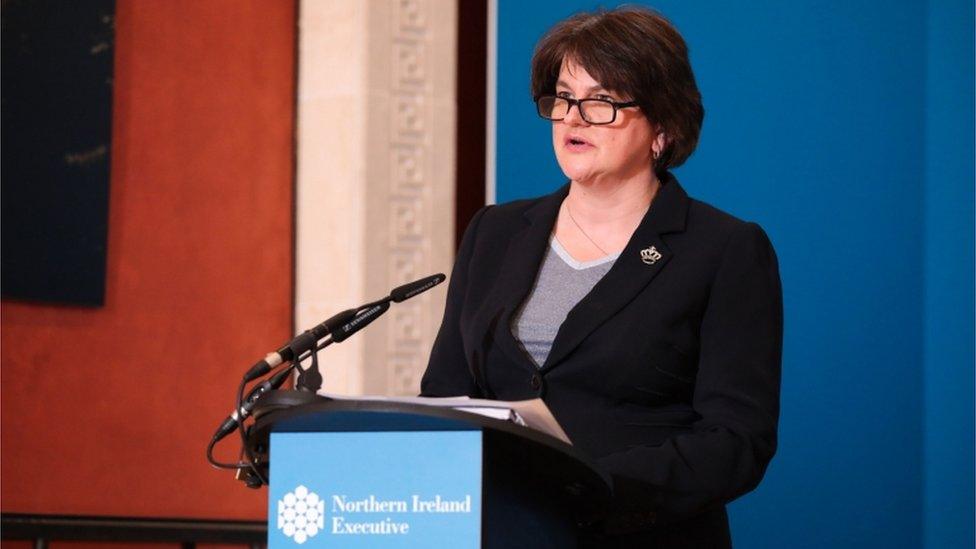
- Published4 October 2020

- Published8 January 2021
